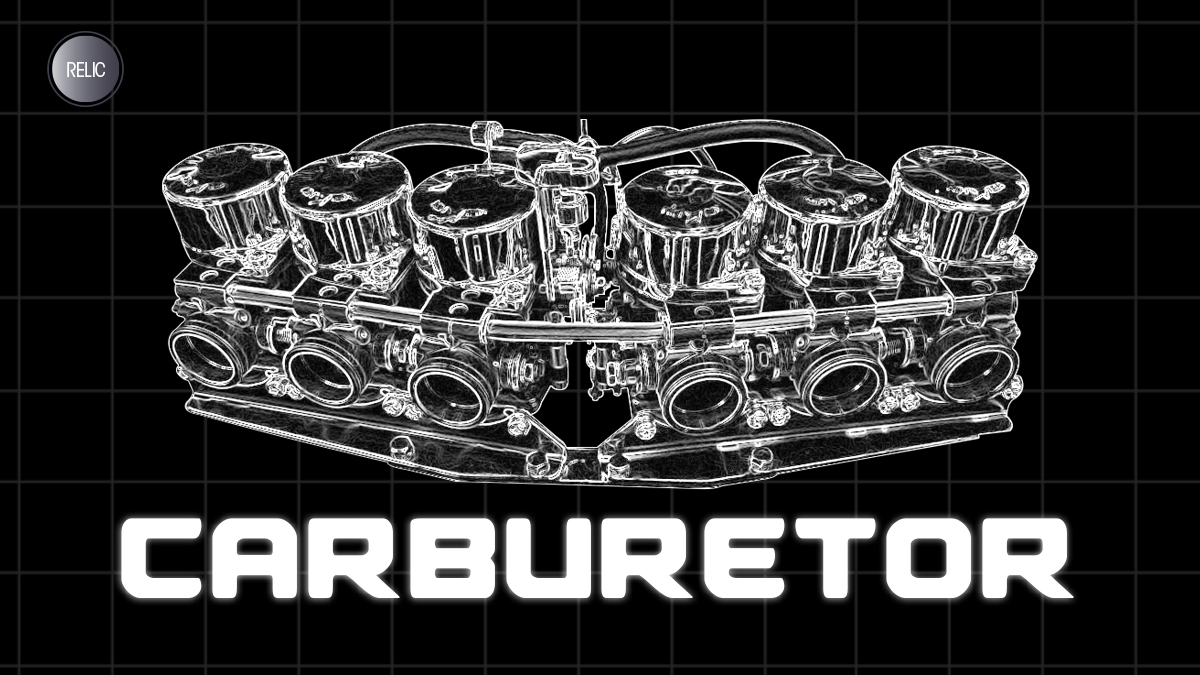The very word carburetor itself seems like a relic of the ancient past. However, the carburetor is a pretty recent invention. It was used in cars for much of the late 19th and early 20th centuries. A carburetor is a device that mixes air and fuel for the internal combustion engine to create a proper air to fuel ratio for combustion. A carburetor works using Bernoulli’s principle: the faster the speed of air, the lower its static pressure, and the higher its dynamic pressure. The throttle actuates caburetor mechanisms and meters the flow of air being carried into the engine. The speed of the flow and its static pressure determines the amount of fuel drawn into the airstream itself.
The inventor of the carburetor was Samuel Morey, who created the device in 1826. However, the first person to file a patent for a carburetor for a specific use (a petroleum engine) was Siegfried Marcus in 1872. Marcus was also the first person to propel a vehicle using petroleum in the 1870s. Karl Benz (of Mercedes-Benz fame) developed internal combustion engines and their components, and also filed a patent for a carburetor in 1888. Carburetors in the late 19th century combined air with fuel by passing it over the surface of gasoline.
Wilbert Maybach and Gottlieb Daimler utilized a float carburetor based on an atomizer nozzle in 1885. So many people used their model that there were numerous patent lawsuits. British courts rejected their claim in favor of Edward Butler, who made a spray carburetor in 1884 on his petrol cycle (largely considered one of the precursors of the modern motorcycle). By 1893, carburetors were considered for stationary engines that are typically used in factories, generators, pumps, and more. Frederick William Lanchester, an Englishman, used a wick carburetor, which was an improvement over the atomizer nozzle. The wick carburetor filtered out impurities, making the automobile more efficient.
Caburetors were largely used in cars all throughout the 20th century. However, fuel injection would take its place, but it would be decades before fuel injection became preferred over carburetors. Adams Farwell invented a fuel injection system in 1910, but it was generally used for diesel engines. A 1949 issue of Automotive Digest praised fuel injection, saying, “Some automotive men feel that fuel injection for passenger automobiles is nearing the climax in experimentation and may soon make its bow to the driving public.”
The carburetor took another 30-plus years to fade out of automobiles. By 1986, all gasoline engines had fuel injection systems. Some notable cars that still had carburetors include the Oldsmobile Custom Cruiser (1990), Jeep Grand Wagoneer (SUV, 1991), Isuzu (light trucks, 1994), and some cars in other countries, such as Australia, continued to use carburetors as late as 2003.
Carburetors still have a use in small engines today, such as in lawn mowers and rototillers. They are also used in some aircraft. However, the need of this device has propelled technological innovation in the automotive industry to fuel injection, which is the standard in automotive engines.
Also published in GADGETS MAGAZINE July 2019 Issue
Words by Jose Alvarez
